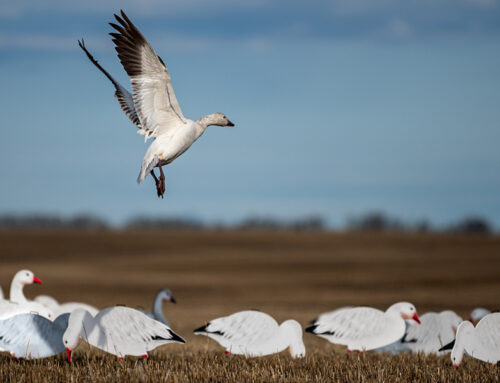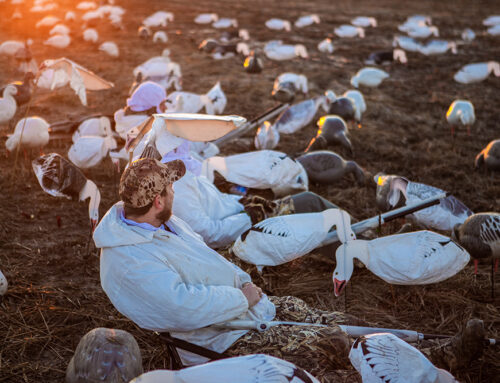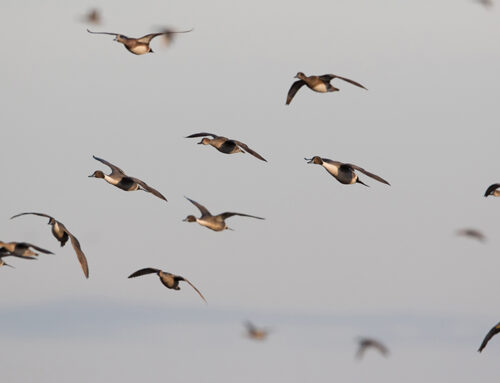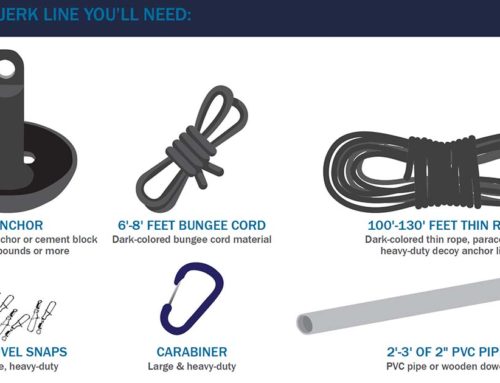7 Keys to Early Season Success

By Bill Miller
When the sun comes up on a new duck season, it has been at least eight or nine months since you closed the shell box on last year’s hunting. With the pace of the lives we live in between, it’s easy to forget stuff — especially the tactics that are unique to early-season hunting.
So, here are seven things you need to remember to help you enjoy the start of the new season … and if they help you bag a few more ducks than last year, that’s just icing on the cinnamon rolls.
Use Smaller Shot
September and early October ducks are at their lightest feathering of the season. Getting shot into vitals doesn’t take as much kinetic energy as when pinfeathers have disappeared and the down is thick and full. However, more shot in the pattern means more chances for pellet strikes. Depending on what kind of non-toxic shot you’re shooting and the ranges you anticipate shooting your birds, it’s time to break out the No. 6s, 5s, and 4s, and save the 2s, 1s and BBs for later. If you want all-season long compromise, steel No. 3s are one good choice.
Open the Chokes
The early season, especially opening day, is also when ducks should be the most naïve, particularly in good production years when there is a high percentage of juvenile birds in the flock. That means they should decoy well and afford close shots. Put in the improved cylinder or light modified tube, and save the mod and improved mod for later on. Once you see the results you get with open chokes, you might not take them out all season long.
Learn to ID Drab Ducks
Especially in the northern climes, ducks are at their most difficult to identify in the early season. Those hunters who begin the season in places like Canada or the U.S. prairie pothole region have come to call them “plain-brown ducks.” These late-eclipse plumage birds can be tough for some hunters to identify in hand, let alone on the wing.
At the least, bring a waterfowl ID book or smartphone app to the blind. These often provide examples of eclipse-plumage birds and will assist in confirming what you’ve taken. Best is to put in some time ahead of the opener with the book or app while you’re scouting to polish your skills in identifying plain-brown ducks on the wing.
With practice, you can identify eclipse-plumage ducks in flight based on their wingbeat patterns and subtle colors, such as on their wing speculums and feet. For example, an otherwise drab drake mallard can be distinguished from a Susie by its yellow bill and black rump.
Drop Birds with Care
Early-season cover is always the densest. Once the sun’s up, look around the blind and you might feel a bit claustrophobic. The green cattails, tules and phragmites can be so thick they look like impenetrable walls — especially to your dog, if he’s the one who has to bust through them. If you drop a bird back in there, chances are slim either one of you will recover it.
Mentally commit to taking only shots that will splash down ducks in the open water. If a bird glides or cartwheels into the thick stuff, get a solid mark on it and go immediately to it — even if that means missing action out front.
Keep this challenge in mind as you select and position your hide, too. Estimate where ducks will approach and try to make sure you have room to shoot them out in the open.
Keep Pup Safe
One important item that often ends up missing the boat on opening day is a first-aid kit for the dog. Don’t leave home without it. Be sure it includes all of the usual stuff, plus extras for dealing with problems the hot weather might create — fresh water is all-important. Even though he may be in and out of the swamp, ensure he drinks clean water in the boat rather than lapping up that pea soup.
Invite a Rookie
There’s no better time to invite along a newcomer than opening day! The weather is usually at its most pleasant of the season. The birds are at their least wary. If you’ve done your scouting, action should be fast and furious. There are few final exams or holidays to deal with around September and October openers. It all adds up to the perfect time to extend an invitation to a new hunter of any age to join you. Kids are great, but so are college students or the new guy or gal that just got hired on at the office.
What will you get out of it? You’ll feel the thrill of experiencing a first opening day all over again through the senses of your neophyte companion. How could it get any better than that?
Bring Your Patience
The public marsh and boat landing will likely be full of other waterfowlers, as most everyone hunts the opener and while the weather’s still enjoyable. Hard as it might be, when it comes to backing boat trailers, forgetting a piece of gear, full parking lots, dogs running all over — keep your cool. Keep in mind, everyone is here for the same reason: to enjoy another grand start to duck season. And if you’ve invited along a rookie, remember you are responsible for the first impression, which will determine if he or she ever comes back!
Above all, remember to have a safe and enjoyable start to your season, regardless how many times you pull the trigger.






[…] Familiarizing yourself with the areas you hunt in is a crucial first step in preparing for the hunting season. Regularly visit these sites during the off-season, observing any changes in the landscape, water sources, and food availability that may affect duck behavior and patterns. […]